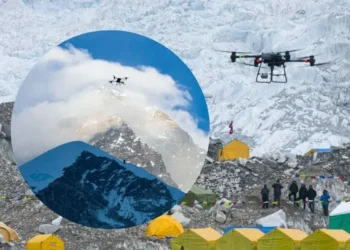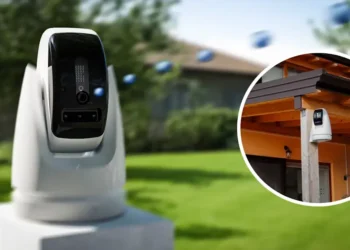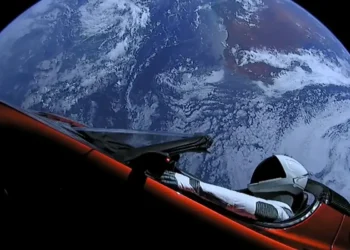
Vaonis, a French smart telescope maker, has created Hestia, a compact telescope that uses your smartphone’s sensor to capture stunning sky photos.
The Hestia telescope can display detailed, close-up pictures of the sun, moon, and space using any smartphone with a good camera.
Hestia Specs:
- Size: (17 x 24 x 5,5 cm) or (6.7 x 9.5 x 2.2 inches)
- Weight: 1.1 lbs (500g)
- Aperture: 30mm (1.2 in)
- Magnification: x25
- Application: Sun, Moon, Deep-sky objects
- Optic Design: 6 lenses in 3 groups
- Field of View: 1.8 degrees
- Image Formats: JPEG, TIFF
- Limiting Magnitude: 7-8
- Compatible Tripod: Tripod with pan and tilt fluid head & 3/8″ thread
Hestia is a small and compact telescope, measuring 17 x 25 x 5.5 cm (6.7 x 9.5 x 2.2 inches) and weighing just over 500 g (slightly over a pound).
According to Vaonis, its compact smartphone mount significantly improves sharpness and detail resolution for lunar craters and sunspots, providing up to five times better results compared to using a smartphone alone. It also offers up to 25 times better low-light sensitivity.
Light enters the system and passes through prisms to focus on the camera array at the back of the smartphone. Removable magnets assist the user in aligning the primary camera with Hestia’s eyepiece.
The specifications, like sensor size and image quality, rely on the smartphone paired with the telescope. It allows for magnification of up to 25x.
The telescope comes with a mobile app that uses special algorithms to merge multiple short-exposure images into a single, improved view of the night sky through the lens.
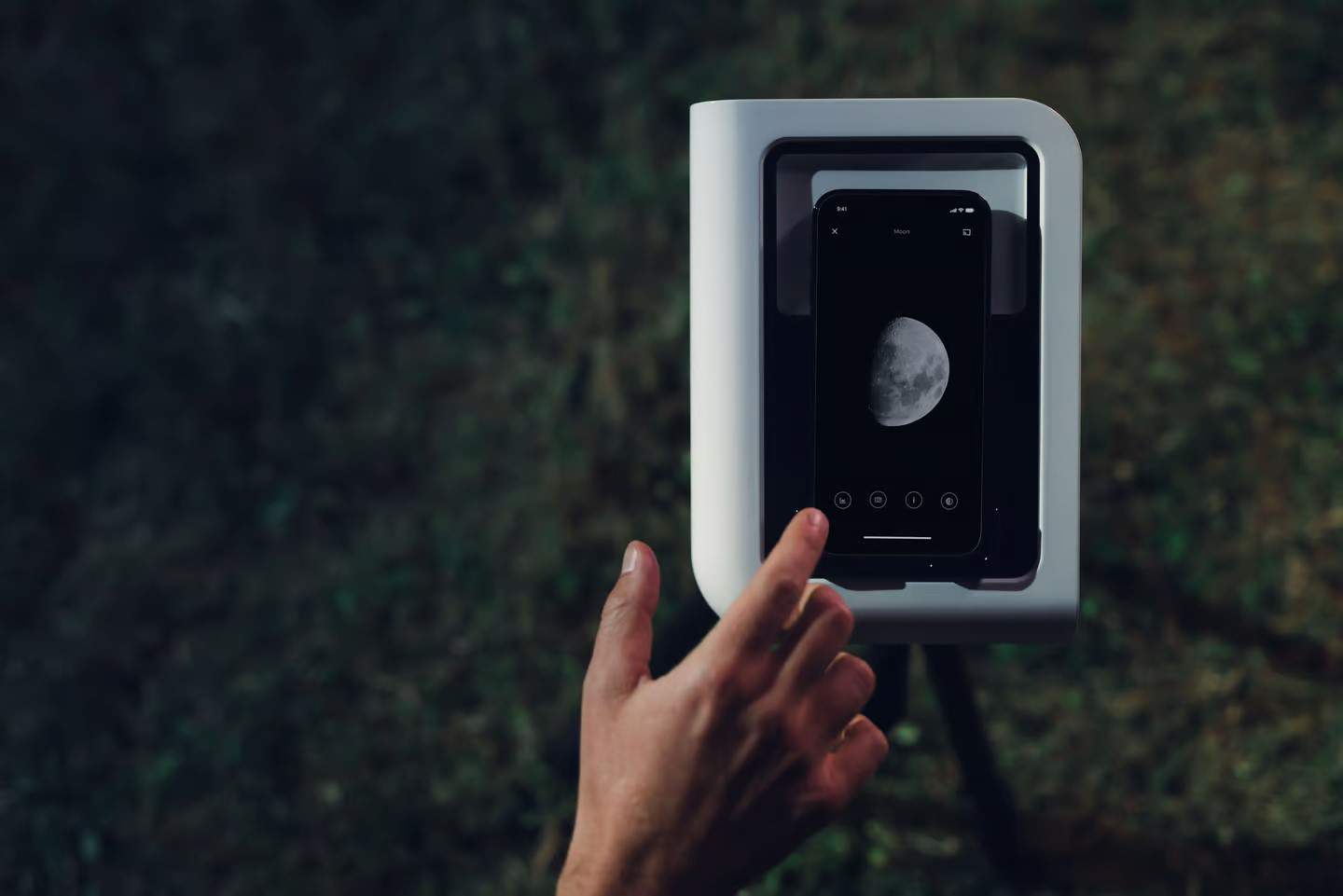
Vaonis claims that their telescope, Hestia, is adaptable enough to capture all types of celestial objects. It can be used for solar photography during the day and for capturing the moon and “deep sky” objects at night.
Hestia’s design Includes a unique patented six-lens in three-group optical system with a 30mm objective and prisms. This design enables it to directly collect and focus light into a smartphone’s camera.
It offers a 1.8-degree field of view, and using the Vaonis app, users can capture images in either JPEG or TIFF format.
The app provides an interactive sky map to help users find interesting targets and position the unit for optimal results.
A library of astronomical information is available with just a tap, making it accessible for beginners or anyone curious about celestial objects.
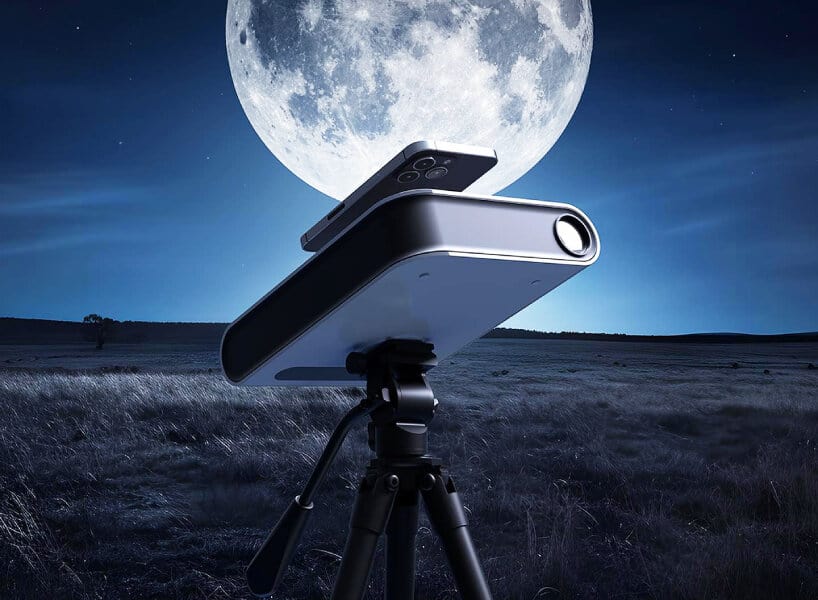
The company is highly promoting Hestia’s capability to photograph the solar eclipse scheduled to cross North America in 2024, which will be the last chance to witness such an event until 2044.
They are ensuring that all Hestia units will be shipped by April 8, 2024, so that people interested in photographing the eclipse won’t miss this unique opportunity.
The Hestia telescope offers a solar filter option to observe sunspots, aiding in understanding the Sun’s behavior and its impact on space weather and our planet.
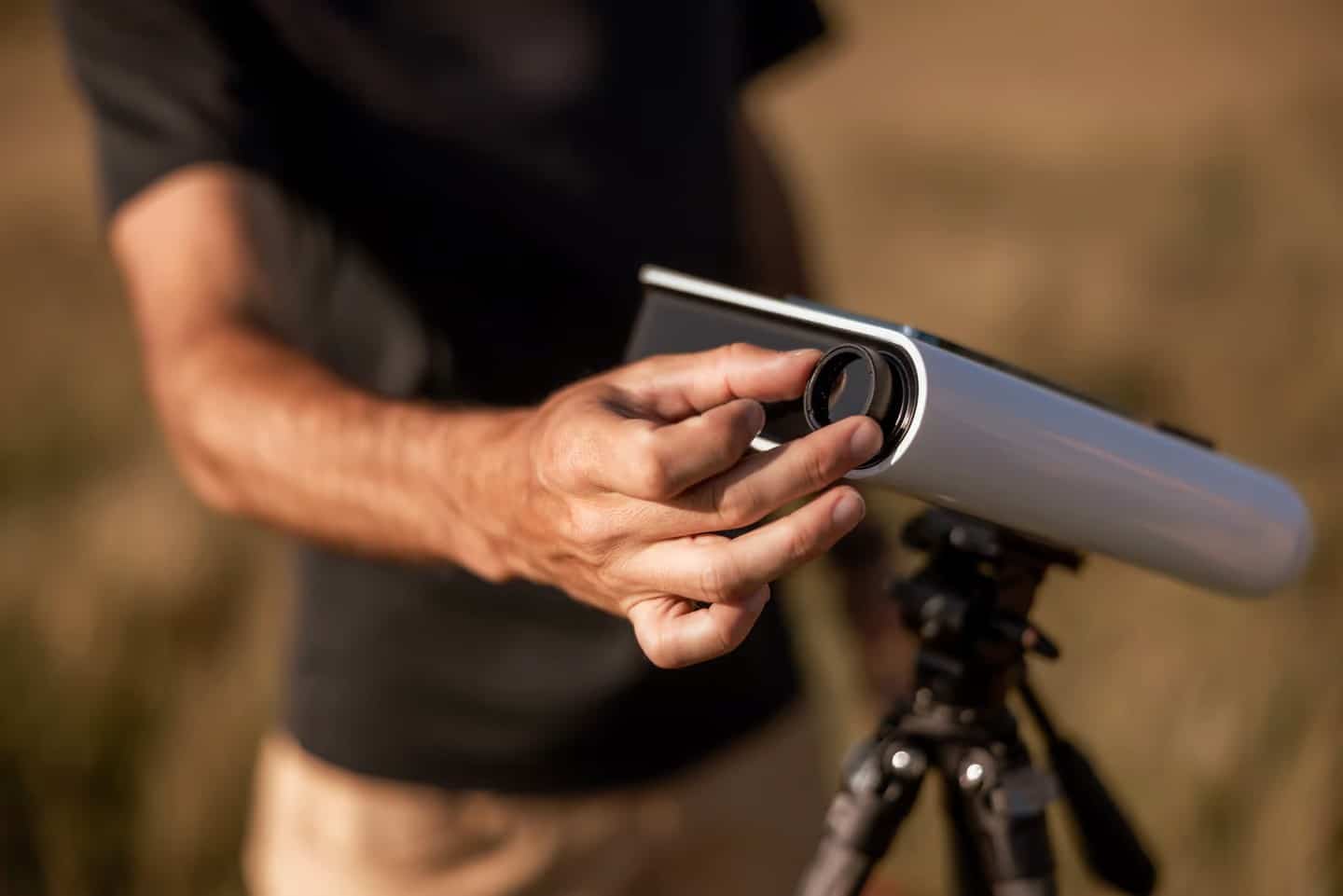 Early bird Kickstarter pledges begin at $149, but additional costs apply for the adjustable tripod, solar filter, and hard case bundles.
Early bird Kickstarter pledges begin at $149, but additional costs apply for the adjustable tripod, solar filter, and hard case bundles.
Standard crowdfunding cautions should be taken into account, but if the funded campaign proceeds as intended, shipping is estimated to begin in December.
This will give sky-gazers enough time to prepare for the April 2024 total solar eclipse, which is expected to be visible to over 80% of people in the US.

